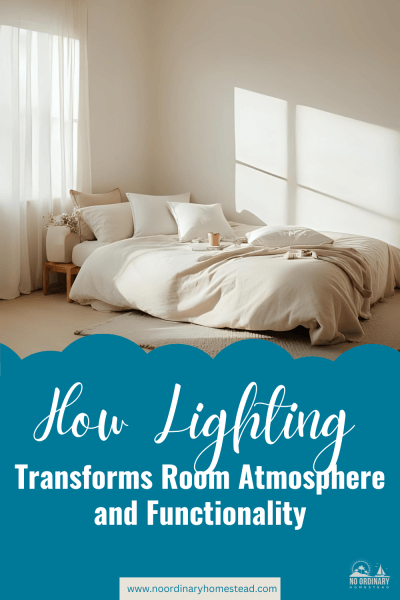Lighting often receives less attention than furniture or color schemes during interior design, yet it fundamentally shapes how we experience every room in our homes. The right lighting creates ambience, enhances functionality, and even influences our mood and productivity. Poor lighting, conversely, can make beautifully decorated spaces feel unwelcoming or impractical. Understanding how different lighting approaches affect room atmosphere empowers you to create spaces that truly serve their intended purposes whilst feeling comfortable and inviting.

The Three Essential Lighting Layers
Professional interior designers rely on a layered lighting approach that combines different light sources to achieve both practical illumination and aesthetic appeal.
Ambient Lighting: The Foundation
Ambient lighting provides overall illumination, typically through ceiling fixtures, recessed lights, or large pendant lamps. This base layer ensures safe navigation and general visibility throughout the room. However, relying solely on overhead lighting creates flat, uninspiring spaces that lack depth and character.
Task Lighting: Functional Precision
Task lighting directs focused illumination where specific activities occur—reading nooks, kitchen worktops, home offices, or hobby areas. Desk lamps, under-cabinet lighting, and adjustable reading lights ensure adequate brightness for detailed work without straining eyes or creating uncomfortable glare.
Accent Lighting: Creating Depth
Accent lighting adds drama and visual interest by highlighting architectural features, artwork, or focal points. Wall sconces, picture lights, and strategically positioned floor lamps create shadows and depth that make rooms feel more dynamic and three-dimensional rather than flatly illuminated.
Color Temperature and Mood
Light color temperature, measured in Kelvins, profoundly affects room atmosphere and our psychological responses to spaces.
Warm Light for Relaxation
Warm white light (2700-3000K) creates cozy, intimate atmospheres perfect for living rooms, bedrooms, and dining areas. This softer, amber-toned illumination encourages relaxation and social interaction, making spaces feel welcoming and comfortable during evening hours.
Cool Light for Concentration
Cool white light (4000-5000K) promotes alertness and focus, making it ideal for home offices, kitchens, and bathrooms. This crisp, blue-toned illumination mimics natural daylight, supporting concentration and accurate color perception for tasks requiring attention to detail.
Adjustable Solutions
Dimmer switches and smart bulbs offering adjustable color temperatures provide ultimate flexibility, allowing you to transform room atmosphere throughout the day. Morning energy becomes evening relaxation with simple lighting adjustments rather than fixed illumination schemes.
Strategic Placement for Maximum Impact
Where you position light sources matters as much as the fixtures themselves when creating effective room atmospheres.
Corner Illumination
Dark corners make rooms feel smaller and less inviting. Placing Floor lamps for your home in previously shadowed corners instantly opens up spaces, creating perceived depth whilst providing practical ambient lighting that overhead fixtures cannot achieve alone.
Layering Heights
Varying light source heights creates visual interest and balanced illumination. Combining ceiling lights with mid-level wall sconces and floor-standing options ensures light reaches all areas naturally, eliminating harsh shadows whilst preventing the flat appearance of single-source lighting.
Reflection and Diffusion
Consider how light interacts with room surfaces. Glossy finishes and mirrors amplify illumination, whilst matte surfaces absorb light. Positioning lamps near reflective elements maximises their impact, whereas diffused shades soften harsh brightness in relaxation spaces.
Room-Specific Lighting Considerations
Different rooms serve distinct purposes, requiring tailored lighting approaches that support their primary functions.
Living Rooms: Versatile Flexibility
Living spaces host various activities from entertaining guests to quiet reading. Multiple light sources with independent controls allow you to adjust brightness and atmosphere according to specific needs, creating either energetic social settings or intimate relaxation environments.
Bedrooms: Restful Sanctuaries
Bedroom lighting should promote relaxation whilst providing adequate illumination for dressing and reading. Bedside lamps with warm bulbs support evening wind-down routines, whilst blackout-friendly fixtures prevent sleep disruption from excessive ambient light.
Home Offices: Productivity Support
Workspace lighting directly impacts concentration and eye comfort. Combine natural daylight with adjustable task lighting positioned to minimise screen glare. Avoid positioning monitors directly opposite windows or placing desk lamps where they create reflections on screens.
Common Lighting Mistakes to Avoid
Even well-intentioned lighting choices can undermine room functionality and atmosphere when certain pitfalls aren’t recognised.
Over-Reliance on Overhead Lighting
Single ceiling fixtures create harsh shadows and unflattering illumination. Whilst convenient, overhead-only schemes produce institutional atmospheres rather than inviting home environments. Supplementing with varied light sources immediately improves ambience.
Incorrect Bulb Selection
Mismatched colour temperatures within single rooms create disjointed, uncomfortable atmospheres. Ensure all light sources in one space use similar colour temperatures unless deliberately creating distinct zones within open-plan layouts.
Neglecting Dimming Capabilities
Fixed-brightness lighting limits room versatility. Installing dimmers costs relatively little but dramatically expands how effectively spaces serve different purposes throughout the day and various activities.
Frequently Asked Questions
How many light sources should a room have?
Most rooms benefit from 3-5 light sources of varying types and heights. This layered approach provides flexibility whilst ensuring adequate illumination without over-lighting. Larger spaces may require additional sources to eliminate dark zones.
What’s the best lighting for small rooms?
Light-coloured walls with strategically placed lamps create perceived spaciousness. Avoid heavy, dark fixtures that visually crowd small spaces. Wall-mounted options and slender floor lamps provide necessary illumination without consuming precious floor area.
Can lighting really affect mood and productivity?
Absolutely. Research consistently demonstrates that lighting colour temperature and intensity influence circadian rhythms, concentration levels, and emotional states. Proper lighting supports natural wake-sleep cycles whilst inappropriate illumination can cause fatigue, eye strain, and reduced productivity.
How do I reduce glare from windows and screens?
Position light sources perpendicular to screens rather than behind or directly opposite them. Use adjustable task lights that direct illumination onto work surfaces rather than creating reflections. Sheer curtains or blinds manage natural light without eliminating its benefits entirely.
Should every room use the same style fixtures?
Cohesive design doesn’t require identical fixtures throughout your home. Consistent finishes (brushed nickel, brass, matte black) create visual harmony whilst allowing varied styles appropriate to each room’s character and functional requirements.
Illuminating Your Home Thoughtfully
Effective lighting transcends mere functionality, fundamentally shaping how we experience and use our living spaces. By understanding layering principles, colour temperature psychology, and strategic placement techniques, you’ll create rooms that feel both beautiful and practical. Remember that lighting remains one of the most cost-effective ways to transform existing spaces—sometimes a few well-chosen fixtures achieve more dramatic improvements than expensive furniture replacements or complete redecorations.


